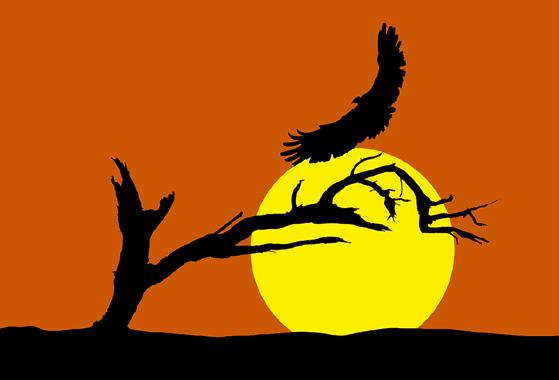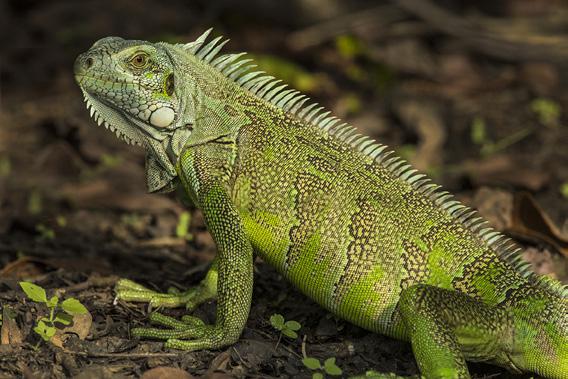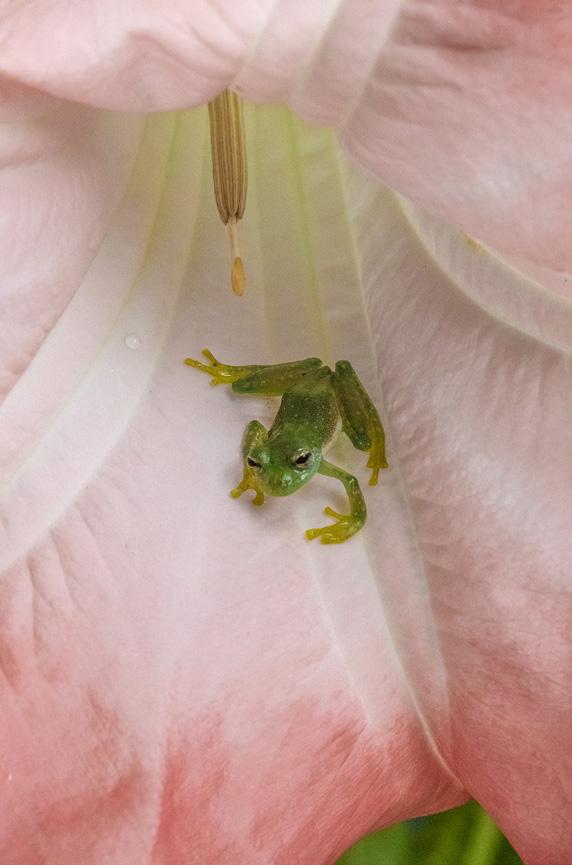
1 minute read
Short and Sweet
1. One way to avoid distracting backgrounds is to get low and shoot upward with the sky behind the subject. This eliminates the horizon, trees, mountains, other people, and buildings that could divert attention away from the subject. This is an eagle hunter in Mongolia with his golden eagle. 2. You can create silhouettes by selecting the subject and then filling it with black using the command: Edit > fill in Photoshop. Poster-like images can then be made by filling in other areas with a solid color. The sun, for example, was made by making a circular selection and then filling it with yellow.

3. When photographing animals, keep in mind they have depth. If you want to see all of their intriguing detail with tack sharp clarity, use a small enough lens aperture for the depth of field you want. I shot this iguana in Brazil at f/13. Even if the light is low, raise the ISO to get the DOF needed. 4. Wide angle lenses provide an unusual perspective when used looking downward. Using a 14mm lens, I stood on a chair above the bed for this shot in Venice, Italy, during carnival. Notice how the vertical lines converge at the bottom of the frame, not at the top as they would if shooting upward. §








